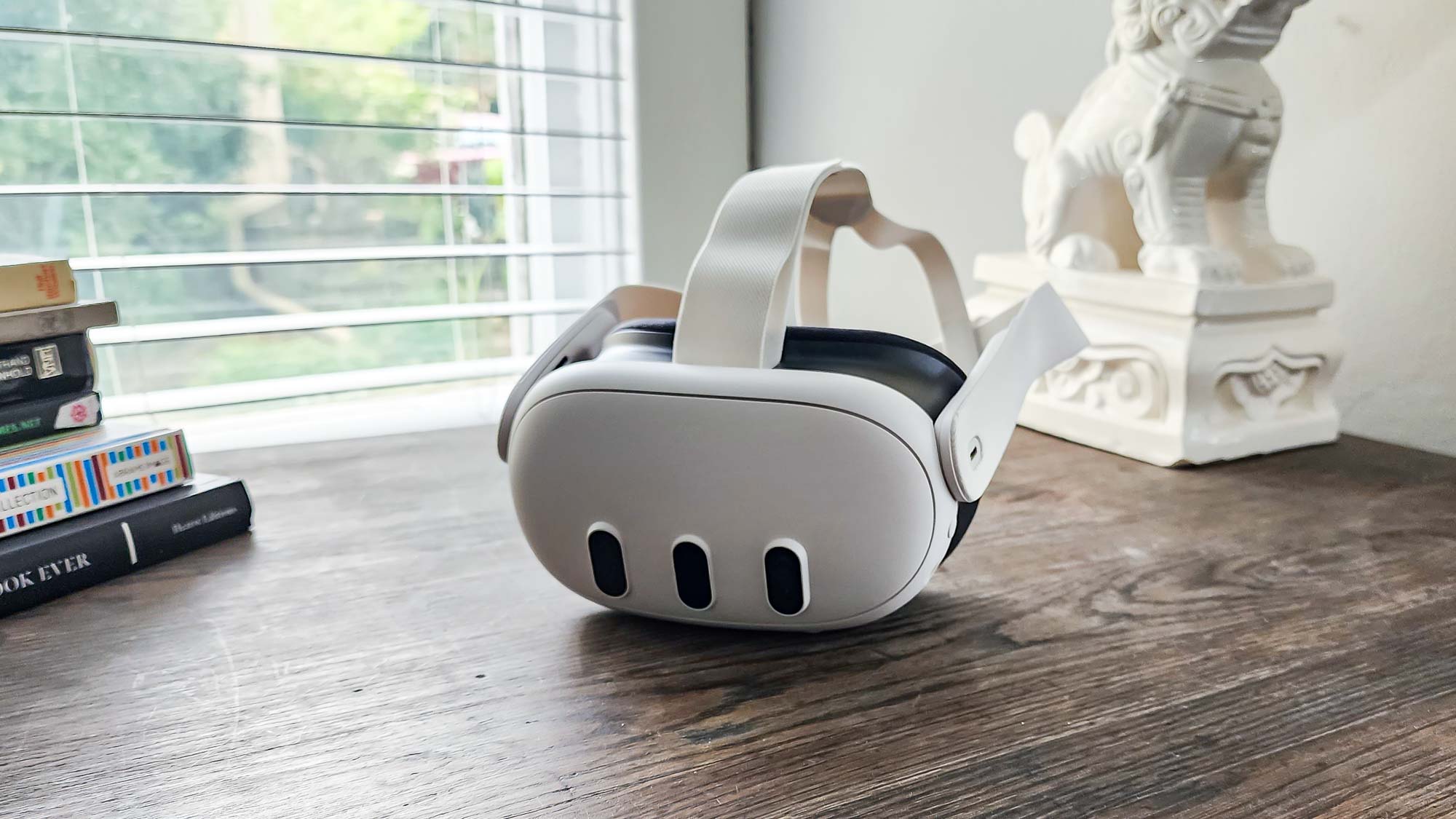Meta Quest 3 justifies its price in teardown… but it’s still a repair nightmare
Impressive components, but hopefully you’ll never have to replace them

There’s good and bad news from iFixIt’s latest teardown video, starring the brand new Meta Quest 3 mixed-reality headset.
The good news is that, despite costing half the price of the Quest Pro (and a third of its short-lived original MSRP), the components clearly don’t offer half the performance. The bad news is that repairability is evidently still nowhere near the top of Meta’s priorities.
The main problem is the difficulty users will have reaching the component they’ll most likely need to replace: the 19.44Wh lithium-polymer battery. It’s hidden behind a maze of components, coax cables, and connectors, as well as the mainboard, heatsink and “about 50 screws.”
Weirdly, once you reach it, it is actually easily replaceable, but the journey there is not for the faint of heart. “I’m glad to see the battery is replaceable, but my word it’s as much of a pain to get to as the Quest 2’s battery,” laments iFixit’s Shahram Mokhtari in the commentary.
It’s not all bad, however, with the controllers themselves being extremely straightforward. Just pop off the side and replace a single AA battery whenever you need more juice. If you need to dig deeper, you’ll find just a few screws, a magnet and a series of ribbon cables.
But with no repair guidance from Meta, no spare parts sold, and with repairability still clearly not front and center of the company’s design philosophy, iFixIt gives the Quest 3 a repairability score of 4/10. Though it’s important to note that’s a “significant improvement over the Quest Pro when it comes to repairability.”
For iFixIt, these baby steps are important, because while VR headsets are far from mainstream, it wants to instill good repairability practices into manufacturers on the off chance they take off big time.
Sign up to get the BEST of Tom's Guide direct to your inbox.
Get instant access to breaking news, the hottest reviews, great deals and helpful tips.
“By drawing attention to these design flaws, our hope is that the engineers and product designers will factor it into their next iteration so that when that ‘iPhone moment’ does arrive, we’ll already have repairability and reusability at the forefront of the discussion,” writes Mokhtari in the accompanying article.
What makes the Meta Quest 3 tick
Beyond repairability, the good news is that the Meta Quest 3 not only justifies its costs, but is actually superior to the $999 Quest Pro in a handful of ways.
Yes, it lacks the fancy eye tracking hardware, but it has faster performance with the Qualcomm Snapdragon 8 XR2 Gen 2 chipset leading the way and a slightly higher resolution at 2,064 x 2,208 pixels per eye with a 120Hz refresh rate (the Quest Pro, meanwhile, peaks at 1,920 x 1,800).
Most importantly, it includes a feature the Quest Pro cut to keep the price and weight down: a Time of Flight (ToF) sensor. As well as being important for hand and controller tracking, this neat sensor means that, unlike its predecessors, the Quest 3 can tell the distance between objects, meaning you no longer need to map out a ‘safe space’ before you begin your VR session.
Interestingly, the ToF sensor is actually exactly the right size to fit in a gap Mokhtari spots on the Quest Pro — and it even fits the connector on the headset’s board. Not that you can expect this manual upgrade to work, but it’s interesting that it was likely a consideration in Meta’s original design.
“Overall I personally don’t think it’s fair to call the Quest 3 a compromise between the Quest 2 and the Quest Pro,” Mokhtari explains. “The Quest 3 does have better LCD panels, a Time of Flight sensor that makes for a much better passthrough experience, and to top it all off it has a better processor too.”
Yes, it lacks eye tracking, but if developers aren’t building killer software to take advantage, the average user really won’t miss out on much by opting for Meta’s cheaper option. In other words, Meta has really built a rod for its own back if it fancies building a second-generation Pro headset.
Freelance contributor Alan has been writing about tech for over a decade, covering phones, drones and everything in between. Previously Deputy Editor of tech site Alphr, his words are found all over the web and in the occasional magazine too. When not weighing up the pros and cons of the latest smartwatch, you'll probably find him tackling his ever-growing games backlog. Or, more likely, playing Spelunky for the millionth time.

